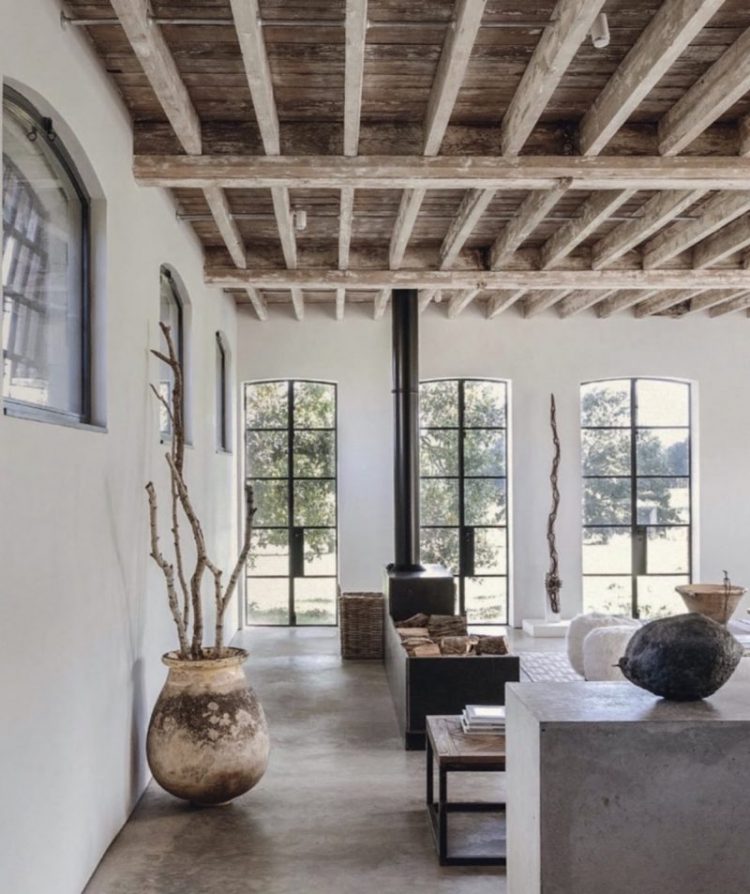Thinking of rolling up your sleeves, picking up a hammer and renovating? Before you start knocking down walls or picking out tapware, know what you are hoping to achieve. Determine your needs vs. your wants and document your possessions. We talk to the experts on all aspects of a renovation project from budgets to hiring professionals, to maintaining your sanity. Discover the 10 most common renovating mistakes people make here. A must-read. Building projects are stressful no matter how well things go during construction. Read more, ‘Expert Advice: 15 Secrets For Saving Money On A Remodel.’
Trusting someone with two of your most precious possessions—your money and your home—creates very real anxiety for both you and your builder.
Before you start picking out tiles and knocking down walls, it’s important to clarify in your own mind exactly what you’re hoping to achieve – and how you’re going to pay for it.
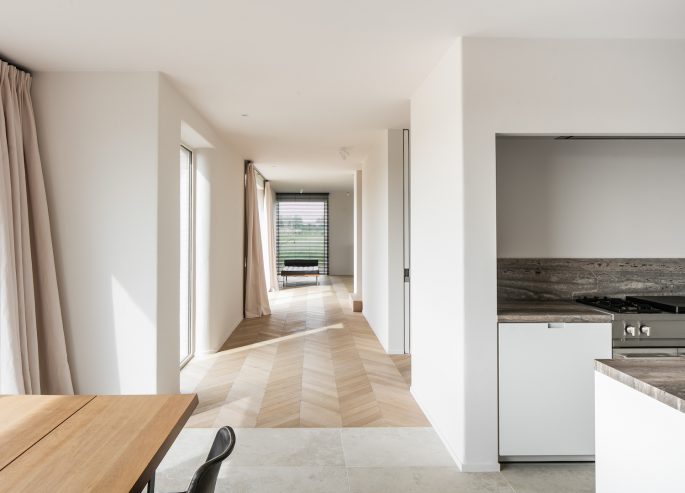
Your budget will dictate the type, quality, and length of your renovation, and is a crucial question to address during the planning stages of your renovation. Image via Est Living.
1. Why are you renovating?
Are you renovating for your own enjoyment? Is it to sell for a profit? To increase your rental return or improve capital value? Your answer to this question will influence almost every decision you make before and during your renovation.
For example, if you’re renovating for a quick resale, your decisions will be impacted by what your target market wants – not by your personal preferences.
If, however, you’re renovating your own home to live in, you can make decisions based on your personal tastes. You wouldn’t want to over-capitalise on the property, of course, but it’s not as critical to have a significant financial margin between what you spend and what you stand to make.
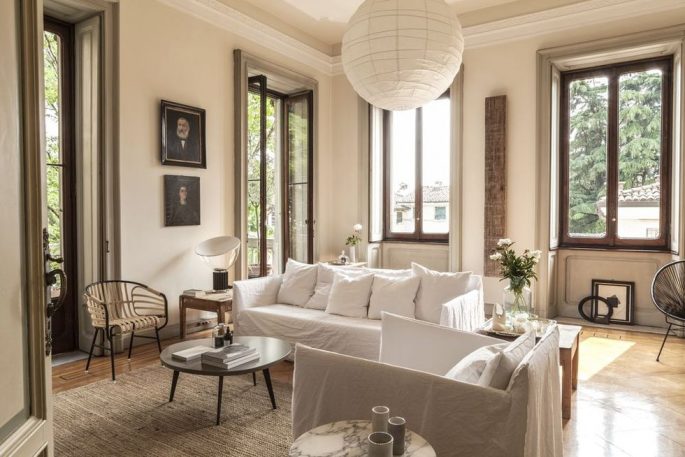
To keep renovation costs down, keep the same size windows, if possible although you can also make a spectacular change with really big windows or French doors. Image via UK Elle Decoration.
2. What’s your budget… and how are you going to stick to it?
Your budget will dictate the type, quality and length of your renovation, and is a crucial question to address during the planning stages of your renovation. Ensure your budget is as accurate as possible to avoid a major blowout that leaves you with an unfinished home – or, in some cases, debt.
Allow a buffer of at least 10 percent to ensure that you are covered for the unexpected, even for experienced renovators.
To keep renovation costs down, decide what your ‘hero’ items are – the more costly items you won’t compromise on – then decide what you’re willing to spend less on. It’s crucial to factor in costs beyond the aesthetics too, such as stamp duty, insurance and property-improvement costs. And don’t forget about hidden costs, such as demolition and site clean-up.
So what makes a good ‘hero’ item? We’d recommend splashing out on a better-quality benchtop. Remember resale. Spend a little, and it usually pays off in the long run. Or, you might consider paying more for lighting – items that will set the mood in a room and immediately draw the eye.
If your goal is making a profit from your renovation, you’ll need to nail the visual appeal of the property. Look to improve those elements potential buyers notice as soon as they walk into a property, such as your entrance, window furnishings, light fittings and flooring. Keep the same size windows, if possible although you can also make a spectacular change with really big windows or French doors. Increasing natural light is always a good investment. Use existing plumbing locations, if possible. In Australia and the US it’s in the walls, so changing it requires much more work.
Insulate all exterior walls and ceilings. If you open up any internal walls, put in insulation, particularly around bedrooms and bathrooms. It’s cheap and it helps reduce sound. If you can afford it, go for custom cabinets. If you’re on a budget, Ikea cabinets are a great buy.
Unless you’re a serious cook or money is no object, don’t buy an expensive commercial-style range and fridge.
There are many mid-priced, great-looking appliances out there. Appliances are standard sizes, so start with what you can afford, you can always move up later. There’s a trend now to make kitchens and bathrooms huge, but they needn’t be—after all, they’re also the most expensive to build. Opt for functionality over size. Buy a good loo —the new ones are quiet and use less water. Read more, ‘Everyone Is Renovating These Two Rooms.’
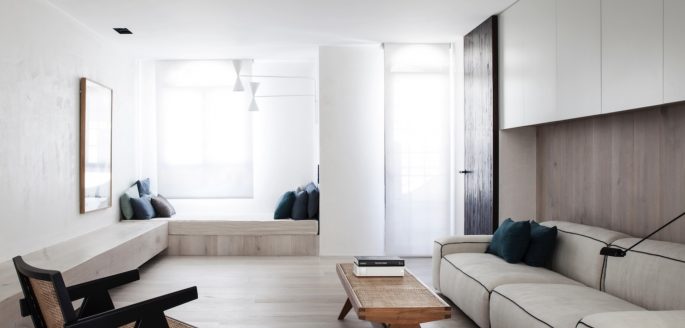
To keep renovation costs down, decide what your ‘hero’ items are – the more costly items you won’t compromise on – then decide what you’re willing to spend less on. Image via EST Living.
3. Create a spreadsheet of all your materials, fixtures, paint colours, and furnishings.
You’ll need to revisit your selections over and over again, to share and re-share with your contractor and/or subcontractors. Start keeping a master list of all the project information and details in one place from the beginning. You don’t want to have to search through emails over and over for the same specs.
4. Forget Reality TV home makeover shows.
Reality TV is great entertainment. We all like to see the big reveal—the tears, the cheering, people being given the gift of a home. It makes for great television. But that’s all it is. Reality is markedly different: Construction and quality craftsmanship cost money and take time. It’s just not possible to build a truly great kitchen for almost nothing, no matter how creative your builder is, and it won’t happen in the blink of an eye because no one builds a custom home in seven days. Not even Superman.
5. Do all of the foundational and exterior work first.
It’s natural to want to move on to the next phase of your project, but ensure the house is sound before you begin interior work. That means replacing windows and putting on a new roof if needed.
You need a solid shell—and it doesn’t make sense to rush the work or to skimp.
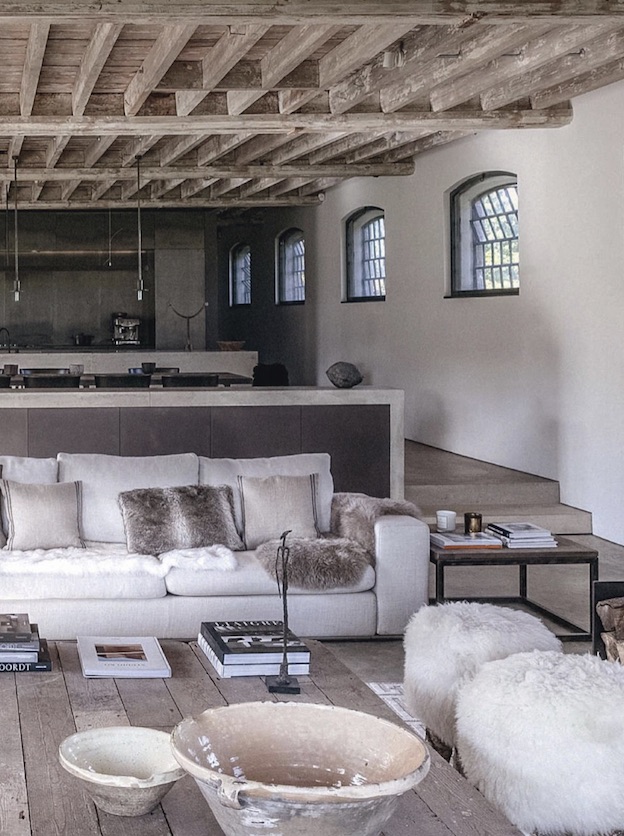
If your goal is making a profit from your renovation, you’ll need to nail the visual appeal of the property. Image via UK Elle Decoration.
6. How hands-on are you going to be?
Decide if you are going to manage the renovation yourself or hire a project manager or builder. Employing a project manager can keep the work flowing and they can be tasked to employ a team for you. If you are looking to keep the costs down and want a more hands-on approach, you will need to build your own team. Ensure that any trades you employ are fully licensed and insured, and that they carry out work to Australian standards.
7. No construction detail is too obvious.
When you’re functioning as the general contractor—or even working with a general contractor—you have to spell out every part of the plan, and never assume everyone is up to speed.
Someone we know had a contractor demo the wrong bathroom.
8. Your prized possessions are another person’s trash: Label what stays and what goes where.
What you consider charming—original wallpaper, an old hall light—your crew may assume is being replaced. So make sure you are clear about what’s staying put. And take the time to spell out what goes where.
It’s wise to create physical reminders: Use spray paint to show where something is to go, and mark ‘Do Not Remove’ in painter’s tape on everything you want to keep. To avoid miscommunication leave visual signs.
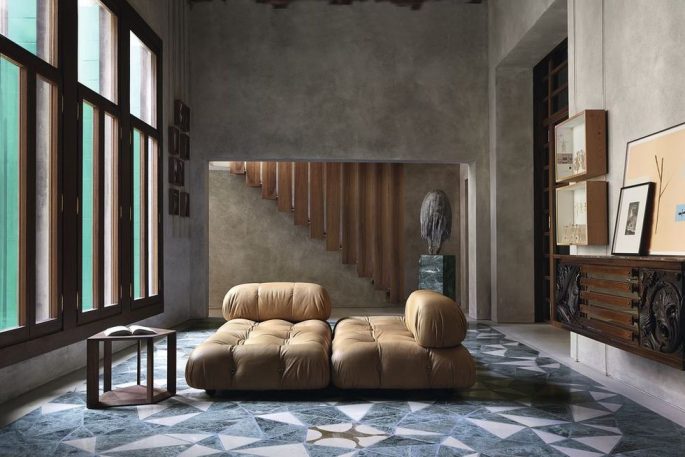
Image via UK Elle Decoration.
9. Triple-check your materials on arrival.
On work sites, packages tend to pile up but they’re not always opened. It’s wise to make sure that what you’ve received is exactly what you were expecting down to the colour and finish. You don’t want to plan for chrome fixtures only to find that the installed shower handle is brushed nickel and needs to be replaced. Or porcelain undermount sinks arrive in slightly different colours.
Inspect boxes on arrival—and avoid losing time down the line.
On the subject of checking things, make sure you also inspect and approve all tile work before it’s grouted. Dark grout hides dirt but it also highlights badly aligned tiles. And since you can’t make changes after grout is applied, it pays to be an eagle every step of the way. You don’t want to find grouted kitchen tile corner edges that don’t meet. Fixing that requires pulling out the workpiece by piece. If you’re going for a contrasting look, you need solid tilework.
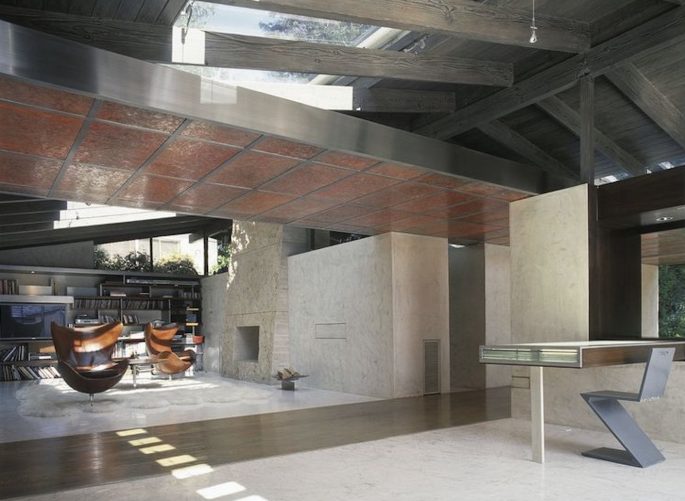
Brad Pitt’s Los Angeles Home via UK Elle Decoration.
10. Respect your builder.
While renovators are, of course, welcome in their own homes, certain times are better than others to see the work— and it’s not while it’s actually in progress. What’s best is to schedule a site meeting in which the project team (any combination of client, architect, designer, contractor) can convene to review what’s been accomplished and discuss project details. Having you, your children, and your pets underfoot during construction can be time-consuming and dangerous; it also impacts the work schedule and hence the budget. Consider putting scheduled site meetings in your contract.
Regardless, before dropping in, check with your builder to make sure you’re not unnecessarily disrupting the workflow.
And spend some time relaxing in your rental while we get your house ready for the big reveal. You probably don’t like people watching everything you do while at work, asking for explanations in laymen’s terms, step by step, while letting unsupervised kids play in your work area? So don’t do it to your builder.
A final note: Build-in bonuses for completing the work on time.
If you’re working on a whole house, chances are your timeline is going to evolve. The scope of work and deadlines should all be in writing. Ultimately, though, your timeline will slip; that’s just realistic. A tip that can keep everyone motivated is bonuses for on-time or early completion. This, of course, depends on working with a builder you know will do the job right. Work crews respond well to incentives. They also need to be kept happy: popping in with sandwiches and drinks is an easy way to keep the project positive and cranking.

